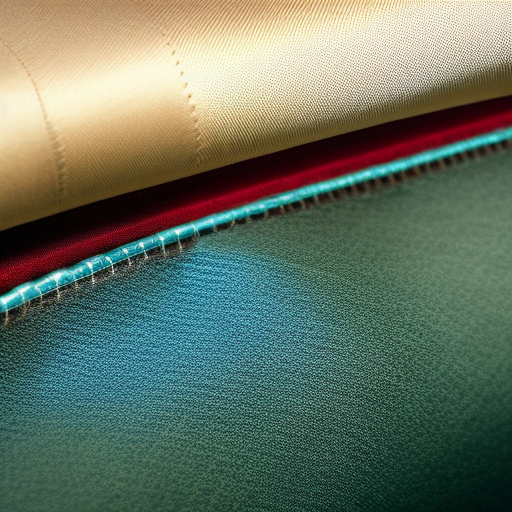Upholstery sewing is a valuable skill that allows you to create beautiful and functional pieces of furniture. Whether you are a beginner or an experienced upholsterer, mastering some key sewing techniques is essential for success. In this article, we will explore the fundamental upholstery sewing techniques that you need to know to create stunning upholstered pieces.
1. Straight Stitch
The straight stitch is the most basic and commonly used sewing stitch in upholstery. It is efficient for stitching seams and attaching fabrics together. To achieve a straight stitch, set your sewing machine to a straight stitch setting, align the fabric edges, and start sewing while keeping the fabric straight.
2. Basting Stitch
Basting stitches are longer, temporary stitches used to hold the fabric layers before the final sewing. They help keep the fabric in place and ensure proper alignment. Basting stitches should be easy to remove and are generally sewn with a longer stitch length to facilitate easy removal.
3. Slip Stitch
The slip stitch, also known as the blind stitch, is commonly used in upholstery to sew openings shut or attach trims. This stitch is virtually invisible on the front side of the fabric, making it ideal for creating seamless finishes. To execute a slip stitch, insert the needle into the fold of one fabric layer and take a small stitch, then move diagonally to the opposite fabric edge and repeat. Continue this process until the seam is closed or the trim is securely attached.
4. Overcasting Stitch
Overcasting is an essential technique used to prevent fabric fraying. It is particularly important when working with heavy-duty upholstery fabrics. An overcasting stitch is similar to a zigzag stitch but requires a specialized foot or attachment. This stitch locks the fabric edges, preventing them from unraveling.
5. Piping and Cord Techniques
Piping and cord are commonly used in upholstery to create decorative edges and seams. To incorporate piping or cord into your upholstery project, you will need to make a fabric-covered tube, either by folding and stitching the fabric over a filler cord or by using pre-made piping. This technique adds an elegant and finished look to your upholstered pieces.
6. Box and Diamond Tufting
Box and diamond tufting are popular upholstery techniques that add a classic and luxurious touch to furniture, especially cushions and headboards. Box tufting involves sewing through all fabric layers to create indented square or rectangular shapes, while diamond tufting creates a diamond pattern. These techniques require precise measuring, marking, and sewing to achieve the desired tufted effect.
7. Securing Springs and Webbing
When upholstering furniture with springs or webbing, it is crucial to sew them securely in place to ensure proper support and longevity. Using heavy-duty thread and upholstery needles, sew through the webbing or attach the springs to the frame, following the recommended guidelines or patterns.
Mastering these upholstery sewing techniques will take time and practice. However, with dedication and patience, you can create professional-looking upholstery projects that will stand the test of time and elevate your furniture to new levels of beauty and comfort.




